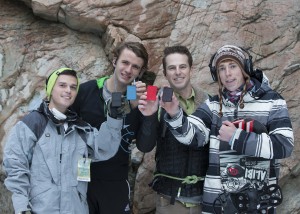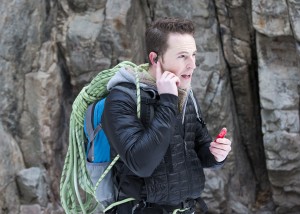A team of students including BYU’s Dallin Anderson came up with a tiny bluetooth device that will help bridge the communication gap between active athletes.
Their idea won the “Most Innovative” award for BYU’s Student Innovator of the Year competition.
The device is a two-way radio they named “Wavio” that will help athletes connect and communicate as they move about.

Anderson said the concept of the idea came from his dad while he and Anderson were out rock climbing. Anderson said communication up and down a lengthy wall was fairly difficult.
“You would be surprised, but pretty often even 100 feet away you can’t hear each other,” Anderson said. “When your hands are tied up and you have no cell signal, it’s hard to communicate.”
It was at this point that Anderson, just starting his MBA, began his pursuit of this technology with Jeremy Rios and Jonathan Spencer, through various BYU-sponsored entrepreneurship events. Some of these included Ideathon and Top-Ten Finish at the Big Idea Pitch.
Spencer said the idea was to make the device small.
“We were thinking we can get this down to a little smaller than a deck of cards,” Spencer said.
He said he was actually the last to hear about it, but said it sounded very appealing.
“Jeremy is actually one of my good friends, and so I came on last,” Spencer said, “I thought, ‘maybe I should look into it,’ and I said ‘Hey, yeah this looks great.'”

Rios, a business major, said joining the team was a personal accomplishment.
“I have the goal of starting a company before I graduate,” Rios said. “I wanted a company and a product that I was passionate about.”
Anderson said the device connects through the user’s phone and provides a seamless connection between listening to music and talking on radio.
“People have responded really well to our concept,” Anderson said.
Anderson and his team said they hope to have a working prototype by Spring and to have enough cash raised through summer to get the product shipped out by Christmas 2016.




